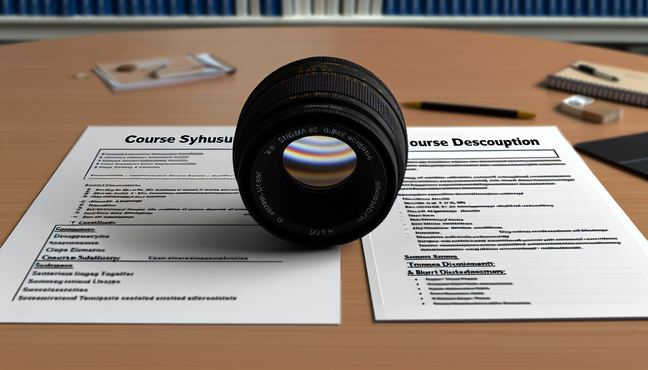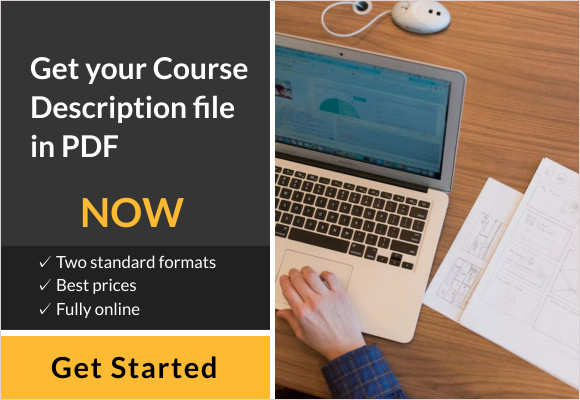Understanding the Basics: What is a Course Syllabus?
A course syllabus is an essential document that outlines the framework and expectations of a course. It serves multiple foundational purposes for both students and educators:
1. **Structure and Components**: A course syllabus typically includes critical elements such as the course title, instructor’s information, objectives, required texts, grading criteria, class schedule, and policies regarding attendance and academic integrity. This structured format helps students navigate their coursework effectively.
2. **Roadmap for Learning**: The syllabus acts as a roadmap throughout the educational journey, providing clear milestones and deadlines. It details the topics that will be covered week-by-week, which aids in time management and allows students to prepare for upcoming assessments and discussions. For educators, it’s a reference point for maintaining course pacing and ensuring all required material is addressed.
3. **Purpose and Importance**: The syllabus plays a central role in fostering accountability and transparency. It establishes students’ responsibilities and the expectations of performance. Furthermore, it can enhance communication between faculty and students by setting clear guidelines that can minimize misunderstandings.
4. **Navigational Tool**: For students, understanding the syllabus can enhance engagement with the course; it allows them to see the connection between different course units and helps in aligning their study strategies accordingly. It supports self-directed learning as students can set goals based on the timeline and expectations laid out.
5. **Educational Equity**: A well-crafted syllabus can also contribute to educational equity by clearly outlining what is necessary for success in the course, thus supporting all students in achieving their academic goals. Moreover, it can include resources for additional support, which is vital for fostering an inclusive learning environment.
In summary, a course syllabus is not simply a formality; it is a pivotal document that guides educational experiences and expectations, supporting both teaching and learning processes effectively. For more insights on educational structures, visit our articles on [course design strategies](https://course-description.com/course-design-strategies).
Decoding the Course Description: A Primer
A course description is a brief summary that outlines the content, objectives, and relevance of a course in an educational setting. It serves as a roadmap for students, detailing what they can expect to learn and how the course aligns with their academic goals. Essentially, course descriptions are crucial for making informed decisions about course selection and understanding the expectations set for students.
A key distinction between a course description and a syllabus lies in their purposes and content. While a course description gives a broad overview of what the course covers—often including goals, main topics, and prerequisites—a syllabus is a comprehensive document outlining specific details such as grading policies, assignments, attendance requirements, and weekly schedules. Essentially, a syllabus provides the operational framework within which the course will take place, while the course description offers a snapshot of the course’s content and aim.
The relevance of course descriptions extends beyond simple navigation of course offerings; they also inform curriculum design and help institutions market their programs effectively. Good course descriptions can attract students by highlighting the unique aspects of a course and showcasing its relevance to future career paths or academic advancement. For more on course details, explore our insights on crafting effective course descriptions at Course-Description.com.
Key Differences Between Course Syllabus and Course Description
The distinctions between a course syllabus and a course description are pivotal for both educators and students. Here’s a breakdown of their key differences:
1. **Purpose**: A course description provides a concise overview of what the course offers, often found in catalogs. It highlights the course’s content, objectives, and intended outcomes. In contrast, a course syllabus serves as a detailed guide for the course, outlining the specific topics covered, schedule, grading policies, assignments, and expectations for students.
2. **Components**:
– **Course Description**: Typically includes the course title, brief summary, prerequisites, and learning outcomes. It’s designed to give prospective students a quick insight into the course’s scope and goals. ([Source: Course Description](https://course-description.com/)).
– **Course Syllabus**: Contains extensive details such as a week-by-week schedule, readings, assignments, assessment criteria, and contact information for the instructor. It may also include policies on attendance, late submissions, and academic integrity. ([Source: Course Description](https://course-description.com/)).
3. **Audience**: The course description primarily targets prospective students looking to understand available courses before enrollment. It is a marketing tool for academic programs. The syllabus, however, is aimed at students enrolled in the course to provide them with comprehensive guidance and accountability throughout the academic term. ([Source: Course Description](https://course-description.com/)).
4. **Flexibility**: Course descriptions are often more fixed and standardized across institutions, while syllabi can vary significantly from one instructor to another, reflecting individual teaching styles and course adaptations. ([Source: Course Description](https://course-description.com/)).
Understanding these differences is vital for students to navigate their educational journey effectively and for educators in crafting meaningful course experiences. For a deeper dive into crafting effective course materials, check our article on [creating a syllabus](https://course-description.com/).
When You Need a Course Syllabus vs. a Course Description
When navigating the academic landscape, understanding the distinction between a course syllabus and a course description is crucial for both students and educators.
A **course description** is a brief overview of the course content, objectives, and intended audience. It typically highlights the main topics covered and the skills or knowledge the student can expect to gain. This document is essential for students when evaluating whether a course aligns with their academic goals or prerequisites for future classes. For example, a course description can help a student determine if it fits within their major or enhances their learning objectives.
In contrast, a **course syllabus** is a comprehensive document that outlines the specific structure of the course, including detailed weekly topics, assessment guidelines, grading criteria, required readings, and instructor contact information. It serves as a roadmap for students throughout the semester, detailing expectations and responsibilities. The syllabus often includes policies regarding attendance, late submissions, and academic integrity, making it a vital resource for students to understand their commitments to the course.
**When to Use Each Document:**
1. **Course Description**: Use this document when:
– Seeking to understand the course’s overarching goals.
– Evaluating if a course aligns with personal or professional aspirations.
– Choosing between multiple course options.
2. **Course Syllabus**: Refer to the syllabus when:
– You’re enrolled in the course and need detailed information on assignments and evaluations.
– You aim to prepare for weekly lectures or submissions.
– Clarifying course policies, including grading scales and important dates.
Understanding when to consult each document can significantly enhance your educational journey and ensure that you are equipped with the right materials for success in your academic endeavors.
For further insights into crafting effective course descriptions, check out our article on [creating engaging course descriptions](https://course-description.com/).
Conclusion: Making the Right Choice for Your Academic Success
Choosing the right educational materials profoundly influences course engagement and overall academic success. Research indicates that students who align their resources with their personal learning styles are more likely to engage meaningfully with course content, which in turn enhances retention and comprehension (see the findings in [Education Corner](https://www.educationcorner.com/learning-styles.html)). Personal preferences, such as a tendency toward visual over auditory learning or vice versa, directly impact how effectively students absorb and apply new information.
Additionally, studies show that tailored educational experiences positively affect motivation and self-efficacy, leading to improved learning outcomes. For example, students who use resources that resonate with their individual needs report higher satisfaction and are more likely to participate actively in class discussions and assignments ([National Library of Medicine](https://www.ncbi.nlm.nih.gov/pmc/articles/PMC5450786/)). Thus, reflecting on one’s learning habits and preferences can equip students with the insight needed to choose appropriate materials that enhance their educational journey.
Ultimately, the decision on which resources to engage with should be deliberative and grounded in personal reflection. By assessing what works best for their learning style, students can foster a more engaging and productive learning environment, ultimately paving the way for their academic success. For more insights on improving your educational engagements, feel free to explore our articles on [Course-Description.com](https://course-description.com/).










